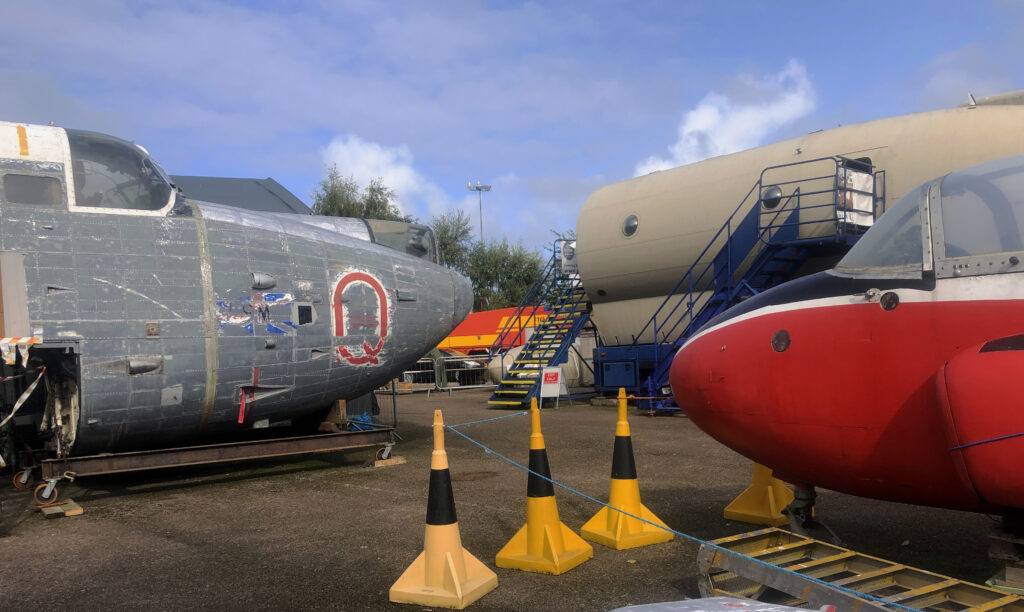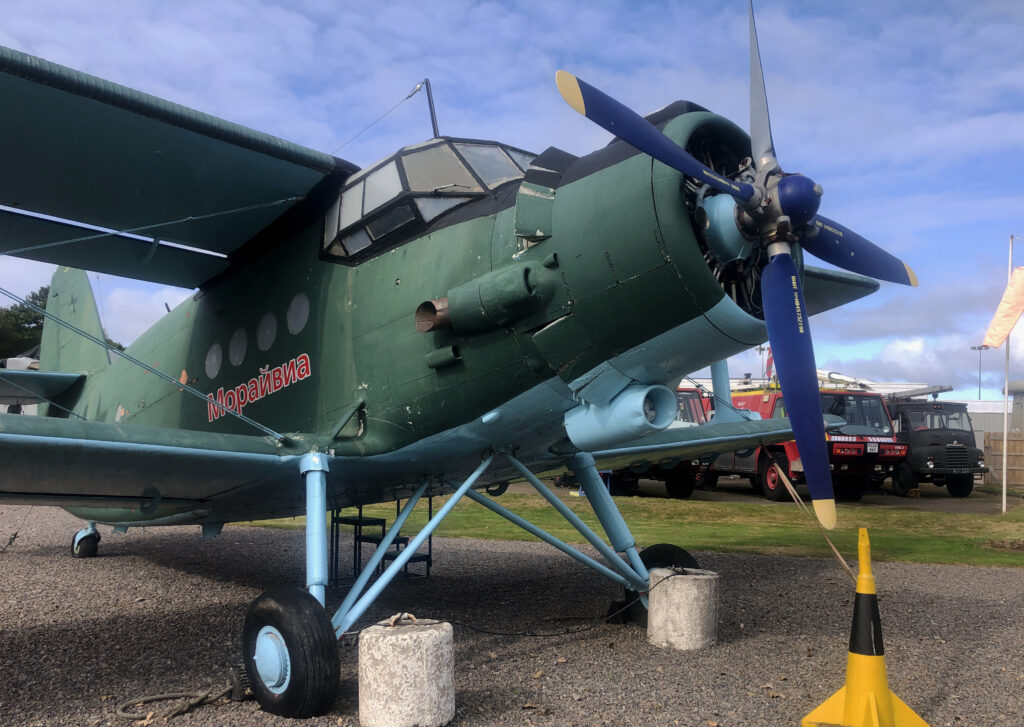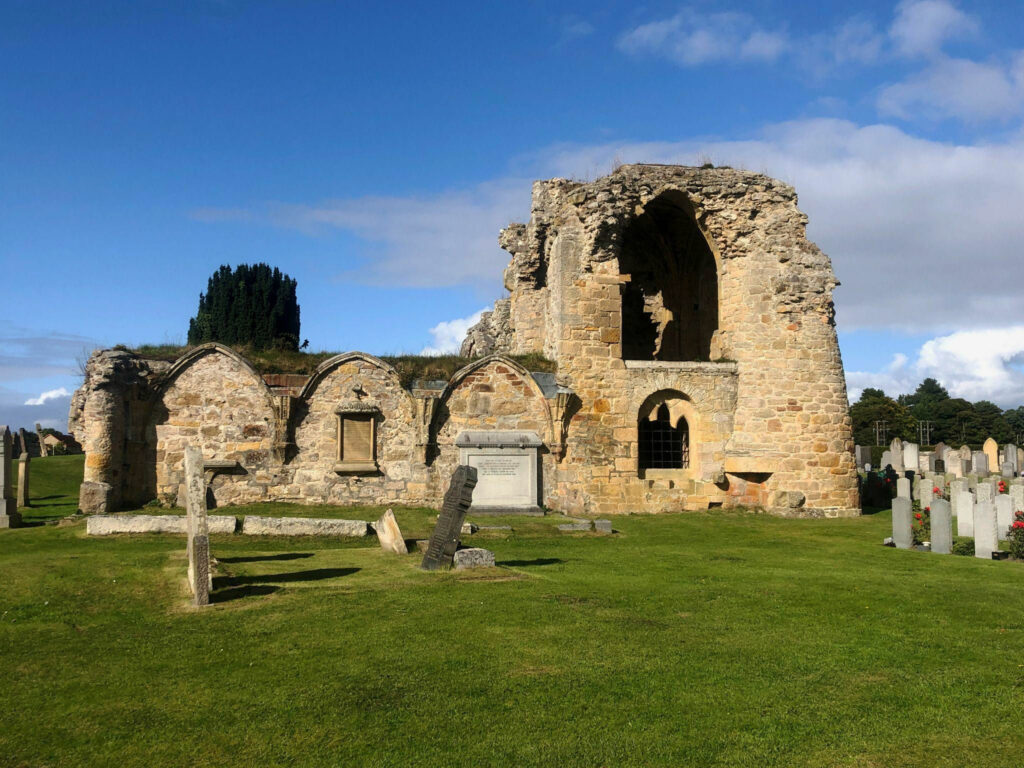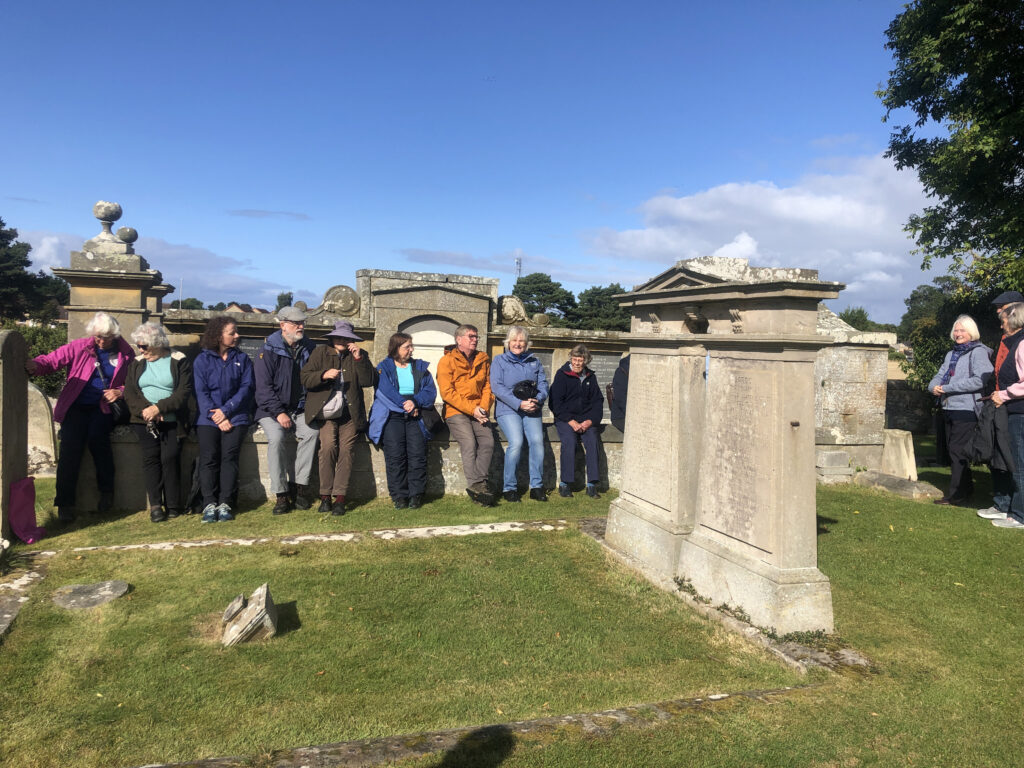Saturday, 16th September 2023, 11am
Morayvia Aircraft Museum
On our arrival at the museum we were greeted by Nat Haggar, one of the leading volunteers at Morayvia. Like many of the volunteers he had a long career in the RAF, and is very knowledgeable and passionate about the Museum and its exhibits. We assembled in front of the Nimrod Memorial to those airmen who have died during the last 40 years in accidents. The centrepiece is the tailfin of the Nimrod which crashed into Lake Ontario in Canada in 1995; this was on display in a museum in Toronto but was shipped to Kinloss last autumn. On either side of this monument are Hopeman stones bearing the names of those who died in this tragic accident in Canada, and also in an accident in Kinloss in 1980, and in Afghanistan in 2006.
The museum has a wealth of interesting displays inside, including the work of the air sea rescue teams, a display of engines, model aircraft of all kinds,computers on which you can test your skills as a pilot, and a cinema. Outside there is a great selection of aircraft, increasing in number every year: the cone of a Nimrod, Westland and Sea King helicopters, parts of a Shackleton, a replica Spitfire under construction, a Russian Antonov AN2 and much more.
Morayvia is a very special museum for several reasons. It developed from the work of the Nimrod Heritage Group set up to preserve the last remaining Nimrod at RAF Kinloss. Morayvia achieved charitable status in 2012, and in 2018 acquired the site of Abbeylands Primary School through Community Asset Transfer from Moray Council. In a relatively short time it has grown into an important aircraft museum. The museum is run entirely by volunteers, and it is their knowledge and enthusiasm which also makes the visitor’s experience so memorable. Also, unlike many museums, almost all the exhibits are accessible, and can be explored inside as well as out.
Morayvia is open at weekends from 11am – 5pm, and occasional Thursdays during school
holidays, from April until the end of October . Admission £8 (children £5)
They have a very good website –https://www.morayvia.org.uk/.
Kinloss Abbey
Our experience in the afternoon was very different. Peter Grant-Peterkin, a trustee of the Kinloss Abbey Trust gave us a very informative and interesting tour of the remains of the Abbey, including the Abbot’s house which is currently being conserved and repaired. Peter began his tour with a brief account of the history of the Abbey which was founded by King David I in 1150 and colonised by monks of the Cistercian Order who had their origins in Citeaux, near Dijon in France. The Cistercians favoured remote and lonely places such as Rievaulx in Yorkshire and Melrose in the Borders where they bred sheep. The area around Kinloss was more favourable for farming and over the following centuries, the abbey became one of the largest and wealthiest Cistercian houses in Scotland, and founded two daughter houses in New Deer and Culross in the early thirteenth century. Later in its history the abbey was beset by scandal and rumours of immorality, culminating in 1492 when one of the monks, William Butler, murdered a young boy and was sent to Rome to receive his punishment and was never heard of again. Its fortunes revived under the rule of Robert Reid, who was Abbot from 1526 until 1550. Peter described him as the most important and influential person to have lived in Moray. He brought the Italian humanist scholar, Giovanni Ferrerio to Kinloss, which became a centre of European learning. He also set about repairing the fabric of the buildings and creating a garden. He died in 1558 shortly before the Reformation and left a sufficient sum of money for the endowment of Edinburgh University. After the Reformation, the Abbey fell into disrepair, and the stone as
eventually sold to Oliver Cromwell for the construction of the Citadel in Inverness. The main surviving structures are the South Transept with its Chapel and the Sacristy; there are
also two cloister walls with one containing the Lavatorium and the archway into the refectory.
There are four distinct graveyards – two municipal cemeteries , a Commonwealth War cemetery and the historic graveyard. We are very grateful to Peter Grant-Peterkin for sharing his knowledge and enthusiasm for this remarkable site.
The Abbey may be visited throughout the year, free of charge. More information can be found on the website: https://www.kinlossabbey.org/
Report by Sara Marsh, Photographs by David Longstaff




